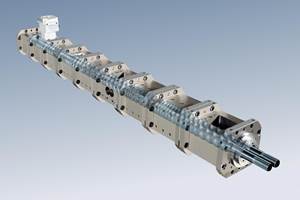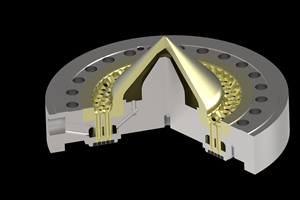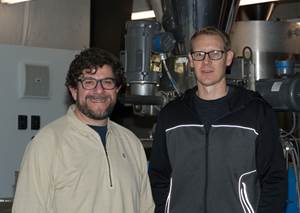Barrel Repair: When Does It Make Sense?
Repairing a barrel can save you time and money vs. buying a brand-new one. But it’s not an easy fix and not even always possible.
Refurbishing a worn extrusion or injection cylinder rather than replacing it with a new one can save money and delivery time. Under the right circumstances, the savings can range from 25% to 50% of the cost of a new barrel. But the benefits of repair are not available for every barrel or even most of them. Whether or not repair can be a viable alternative depends on several factors, starting with the type and size of the barrel.
The repair process is a kind of remanufacturing, and it can sometimes approach the production of a new barrel in terms of cost to the customer. Because new extrusion barrels cost less than those for injection molding, there is frequently little margin for savings compared with buying a new barrel. On the other hand, very large or elaborately equipped extrusion barrels (for instance water- or oil-jacketed barrels, pin barrels, or large rubber mixers) may cost significantly less to repair relative to the original equipment price.
The economics are more favorable for repairing injection molding barrels, particularly since repair often involves relining only a short portion of the entire barrel. Typically this “short sleeve” is installed at the discharge or stroke end of the barrel near the check ring, an area that is especially subject to wear and resulting leakage. Such leakage makes it difficult to control shot size. As a rule of thumb, when the wear in an injection barrel reaches 0.020 in., it is time to repair or replace the barrel. For critical molding applications, the cutoff point may be as low as 0.003 in. In extrusion barrels, by contrast, the level of wear can range up to 0.250 in. for very select applications.
Nowadays, many injection barrels that might have been repaired in the past are being replaced instead. With modern manufacturing methods and productivity improvements, the cost of new bimetallic barrels has come down, and the performance demands placed on the barrels are much greater. Where once pressures of 20,000 psi were standard, today 35,000 psi is common. In addition, part requirements—dimensional tolerances, avoidance of flash, and other quality parameters—have become more stringent.
The process of repairing a barrel requires the removal of a portion of its inner wall—the metal surrounding the bore or screw channel—and replacing it with a newly manufactured, thin-walled bimetallic sleeve or liner. It is absolutely essential that there be an extremely tight metal-to-metal fit between the liner and the original steel. Few companies know how to accomplish this. A repair by an inexperienced company or a “corner-cutting” repair can adversely affect the molding or extrusion process and the quality of finished products.
Producing a liner or sleeve actually involves all of the steps needed to make a new barrel, with the exception of some final machining steps and millwork. The overall repair process is as follows:
• The barrel is placed in a boring machine specially built for rigidity to prevent vibration while a long boring bar and special boring head are used.
• The inner wall of the barrel is bored out so that the resulting bore is approximately 1.0 in. larger than the original bore. This step is particularly difficult, since it involves boring through the extremely hard bimetallic inlay, along with a portion of the backing steel that makes up most of the thickness of the barrel. Boring has to be accomplished while maintaining straightness of approximately 0.005 in. TIR.
• A new bimetallic liner is machined to approximately 0.5 in. wall thickness, maintaining an OD tolerance of 0.001 in. The liner, which consists of a hard bimetallic inlay material plus backing steel, has an OD that is actually slightly larger than the ID of the bored-out barrel.
• Through a special heat-shrinking process, the liner is secured with an interference fit inside the barrel.
• Final machining and polishing takes place. Ask your supplier to take the extra step of re-machining the installed barrel liner to ensure concentricity.
Even when produced under the most exacting conditions, a repaired barrel never quite achieves the degree of straightness, concentricity, strength, or heat transfer available with a new one. When straightness is greatly compromised as a result of a poorly done repair job, it can lead to accelerated wear.
Another risk involved when a repair is not carried out properly is that an air pocket is left between the liner and the outer barrel, causing heat transfer issues, which in turn lead to process problems. Alternatively, a poor fit or a gap between liner and barrel can lead to an incursion of polymer into the interface.
In the case of short-sleeving, seams or cracks are built into the barrel at the site where the sleeve meets the existing inlay, creating the possibility for polymer to hang up and degrade.
Deciding whether to repair or replace a worn barrel is often not a simple matter. The supplier can help molders and extrusion processors make the most appropriate decision. In some cases, the availability of expert repair capabilities may prove to be a valuable resource.
Related Content
How to Configure Your Twin-Screw Barrel Layout
In twin-screw compounding, most engineers recognize the benefits of being able to configure screw elements. Here’s what you need to know about sequencing barrel sections.
Read MoreHow to Maintain Pelletizing Quality When Acid Attacks
Developments in the chemistry of polymers and additives have made corrosion a real problem in pelletizers. Here’s how to ward it off.
Read MoreMore Than a Compounder: They Have the Science to Create New Custom Materials
Insight Polymers & Compounders leverages its expertise in polymer chemistry to develop next-generation materials.
Read MoreImproving Twin-Screw Compounding of Reinforced Polyolefins
Compounders face a number of processing challenges when incorporating a high loading of low-bulk-density mineral filler into polyolefins. Here are some possible solutions.
Read MoreRead Next
Beyond Prototypes: 8 Ways the Plastics Industry Is Using 3D Printing
Plastics processors are finding applications for 3D printing around the plant and across the supply chain. Here are 8 examples to look for at NPE2024.
Read MoreMaking the Circular Economy a Reality
Driven by brand owner demands and new worldwide legislation, the entire supply chain is working toward the shift to circularity, with some evidence the circular economy has already begun.
Read MorePeople 4.0 – How to Get Buy-In from Your Staff for Industry 4.0 Systems
Implementing a production monitoring system as the foundation of a ‘smart factory’ is about integrating people with new technology as much as it is about integrating machines and computers. Here are tips from a company that has gone through the process.
Read More





















